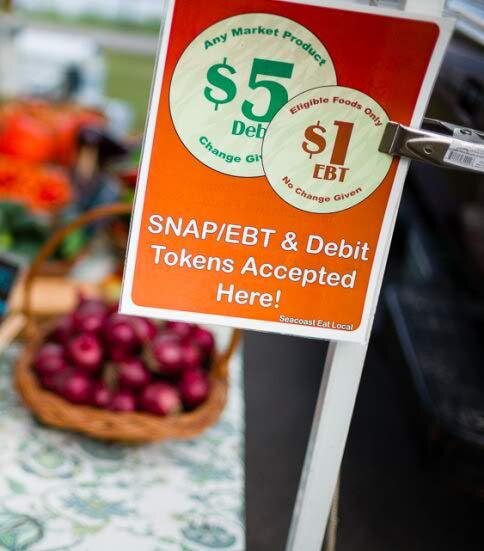By Jordyn Haime
Granite State News Collaborative
CREDIT NH FOOD BANK
Thousands of Granite State children may be eligible for food benefits, even if their families are not already receiving SNAP assistance. Some legal advocates in the state are trying to get the word out about the pandemic related program over fears families may not be applying because they don’t think they are eligible.
“[This] program is a critical resource for families in need during this public health crisis, especially at a time when the eviction moratorium and enhanced unemployment benefits have ended,” said Raymond Burke, co-director of benefits projects at New Hampshire Legal Assistance.
“For families whose financial situation changed as a result of COVID, it’s possible that they could apply and be eligible, even if they weren’t beforehand,” he said.
About 11 percent of children who are eligible for the non-SNAP pandemic food benefits – known as the P-EBT program-- have been approved for those benefits, according to the Department of Health and Human Services (DHHS). While families who receive benefits from the SNAP program will automatically receive funds to their EBT cards, those who do not benefit from the program, but are eligible for free and reduced price school lunches, can apply for benefits by August 24. Students can receive $5.70 in benefits per remote school day stemming from the time when schools were closed during COVID-19.
According to Jake Leon, DHHS communications director, the department was able to reach out to 10,500 of the around 18,000 eligible children for non-SNAP P-EBT food benefits. Those that DHHS was able to reach had already accessed other services and were in the DHHS system, Leon said, which is why the department was able to notify them about the program. But the remaining 7,500 are more difficult to reach.
“We are hopeful that more families apply before the August 24th deadline and are monitoring applications to determine whether additional steps may be necessary,” Leon wrote in an email.
“Our concern was this disconnect, because you have the department of education, since they are kind of the ones who do the determination for the free and reduced price meals, and they have the best way to contact the families,” Burke said. “But you have DHHS implementing the program...it just seems like there’s some barriers to those two agencies working together.”
DHHS has been working on numerous public outreach efforts to get the word out about benefits, including sending out notices to all schools in the state. In a May 26 letter announcing the program to superintendents, DHHS suggested that SAUs should “distribute a parent letter and flyer by email to eligible families that includes information on where to register online and what the program includes.”
When reached for comment, The New Hampshire Department of Education redirected all questions to DHHS.
While some school districts did so, Jackie Brouillard, a mother of three in Tilton, said she didn’t get any notifications via email or text from the Winnisquam Regional School District about the program. Instead, she found out through her sister, who was in the process of adopting a child and was told about the benefits by a caseworker.
“They can use the system on our phone to send out nonsense stuff, but they didn’t use it for this. Food is so important. We’re a low-income family. My husband’s been unemployed twice in the past 15 years. So food is always a struggle. It’s not easy for families to get food in New Hampshire, it’s really not,” she said. “I really felt like the schools should have used their alert system to let parents know.”
Robert Seward Jr., superintendent of Winnisquam schools, did not return requests for comment.
Brouillard, whose three kids are eligible for free and reduced lunch, said she was able to receive nearly $1,000 in benefits, but she almost didn’t apply because the application looked so similar to the SNAP application. She has been trying to encourage other eligible parents to apply.
“I tried to tell a lot of people, but most people told me, we’re not eligible for food stamps so we won’t get it. But I’ve just been encouraging people to go online and apply for it,” Brouillard said.
Burke says NHLA’s main concern is getting the word out to families that they can apply for funding, but that they should also be prepared to submit their child’s eligibility notification for free and reduced lunch.
“You can get through the whole online application, and then if you don’t have that letter, you’re not able to submit it,” Burke said. “If they need the letter, they should contact their local school district. If they’re running into barriers they should give NH legal assistance a call.”
These articles are being shared by partners in The Granite State News Collaborative. For more information visit collaborativenh.org.

